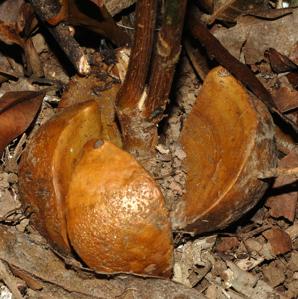The Idiospermum plant has an intriguing story. This rare species, also known as the “Idiot Fruit,” remained unknown to scientists until the late 1970s. Its discovery created a buzz in the botanical community. What makes it fascinating is its unique reproductive strategy. Unlike most plants, it produces both male and female flowers on separate individuals. However, the male flowers are only present for a few days each year, making pollination challenging. Researchers are still unraveling the mysteries of this remarkable plant, which reminds us that nature always has surprises in store.
Picture

Plant some seeds now!
Multi-Colored Bachelor’s Button
Short Description
Idiospermum is a monotypic genus (that is, a genus that contains only one species) in the family Calycanthaceae. The sole included species is Idiospermum australiense − commonly known as idiotfruit, ribbonwood, or dinosaur tree − which is found only in two small areas of the tropical rainforests of northeastern Queensland, Australia. It is a relic of the ancient forests of Gondwana, surviving in very localised refugia for 120 million years, and displaying features (of the flowers in particular) that are almost identical to fossil records from that time. As such it provides an important insight into the very early evolution of flowering plants.
Description
Idiospermum australiense has, in contrast to its weighty evolutionary significance and its extraordinarily unique fruit, a rather nondescript overall appearance. It is an evergreen tree growing to around 25 m (82 ft) tall, with a maximum trunk diameter at breast height (DBH) of around 60 cm (24 in). The leaves are simple (without lobes or divisions), opposite and glabrous (without hairs). They measure up to 24 cm (9.4 in) long by 10 cm (3.9 in) wide, with 7−10 pairs of lateral veins. They are held on petioles measuring 10 to 25 mm (0.4 to 1.0 in) long, and the leaf blades exhibit numerous “oil dots” or pellucid glands (tiny, translucent spots) when held up against a strong light source.
Flowers



